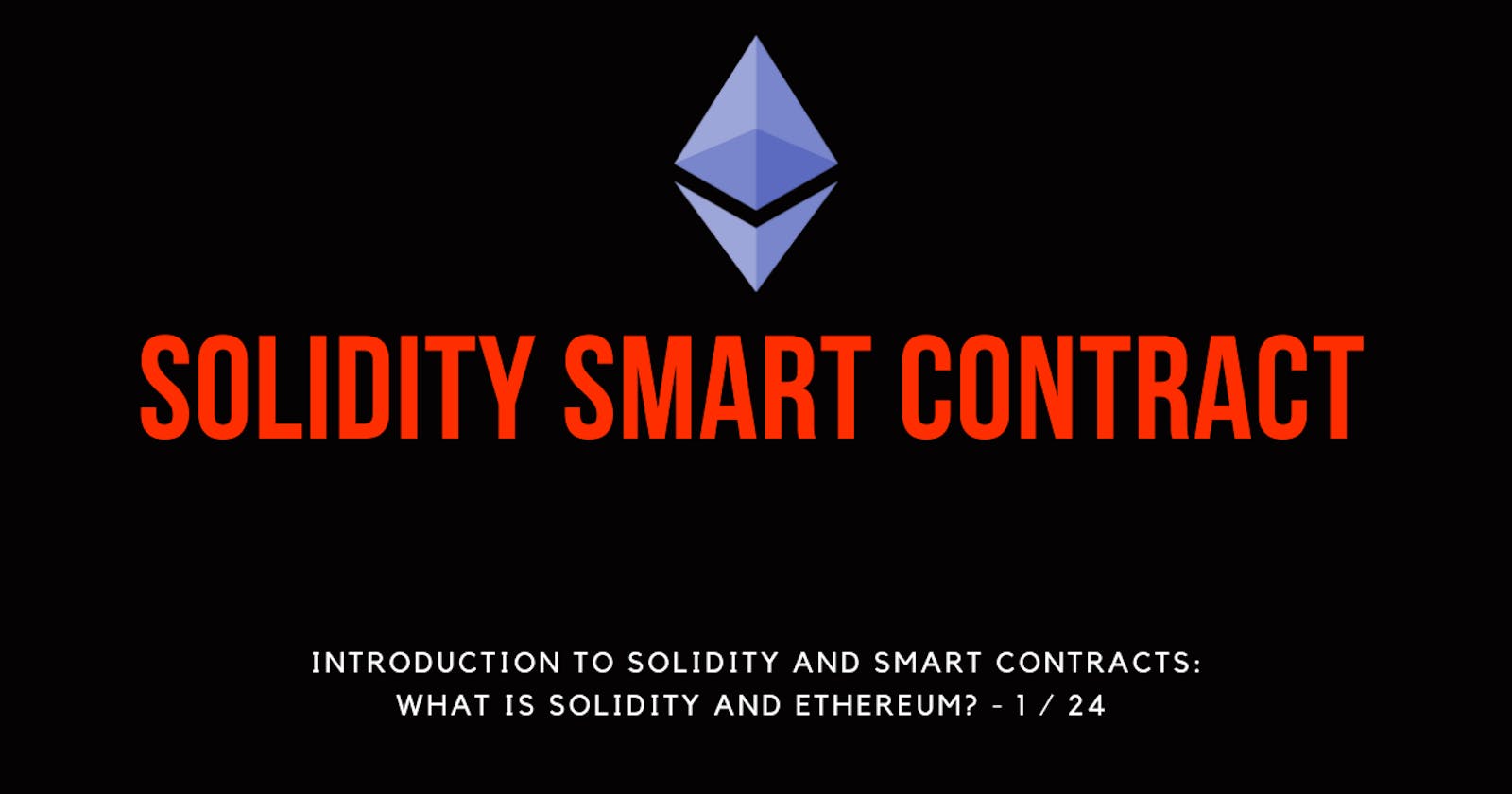Introduction to Solidity and Smart Contracts: What is Solidity and Ethereum? - 1 / 24
1 / 24 article tutorial series on Solidity development
Welcome to the first article in our comprehensive 24-article tutorial series on Solidity development for aspiring blockchain developers! In this series, we will take you on a journey from the basics of Solidity and smart contracts to more advanced topics, covering security, auditing, and much more. Don't forget to subscribe to receive updates and notifications as we release each new article in the series.
What is Solidity?
Solidity is a high-level programming language specifically designed for writing smart contracts on the Ethereum blockchain. It is a statically-typed language, influenced by C++, JavaScript, and Python, making it familiar to developers with experience in these languages. Smart contracts are self-executing contracts with the terms of the agreement directly written into code. These contracts run on the Ethereum Virtual Machine (EVM), enabling decentralized applications (DApps) and decentralized autonomous organizations (DAOs) to function without the need for intermediaries or centralized control.
Understanding Ethereum:
Ethereum is a decentralized, open-source blockchain platform that introduced the concept of smart contracts to the world. Proposed by Vitalik Buterin in late 2013 and released in 2015, Ethereum allows developers to build and deploy smart contracts and DApps on its blockchain. Unlike Bitcoin, which primarily serves as a digital currency, Ethereum was designed to be a versatile platform for creating decentralized applications that can perform complex tasks beyond simple transactions.
Why Solidity and Ethereum are Significant?
The combination of Solidity and Ethereum has brought about a revolution in the world of blockchain technology. By providing a Turing-complete programming language like Solidity, Ethereum enables developers to create sophisticated and versatile smart contracts that can handle complex business logic and automate various processes. These smart contracts are transparent, immutable, and tamper-resistant, providing a higher level of security and trust than traditional centralized systems.
Key Features of Solidity:
Contract-oriented: Solidity is designed to write code in the form of contracts, each representing a specific set of rules and logic that can be executed on the Ethereum blockchain.
Security and Safety: While writing smart contracts, security is paramount. Solidity comes with various security features to prevent vulnerabilities such as reentrancy and arithmetic overflows.
Modularity and Inheritance: Solidity supports modularity, enabling developers to divide their contracts into reusable components. Additionally, it supports contract inheritance, facilitating code reuse and making contracts more maintainable.
Interoperability: Solidity is compatible with other Ethereum standards such as ERC-20 (token standard), ERC-721 (non-fungible token standard), and more, ensuring seamless integration with other contracts and DApps.
Smart Contract Lifecycle: Solidity facilitates the entire lifecycle of smart contracts, including deployment, execution, and destruction if necessary.
Conclusion:
Solidity and Ethereum have significantly transformed the landscape of blockchain development, empowering developers to create decentralized applications and smart contracts that offer transparency, security, and efficiency. In this series, we will delve deeper into Solidity programming, exploring various aspects of smart contract development, security best practices, and advanced features to build sophisticated DApps. Stay tuned for the next articles in this series and subscribe to receive regular updates as we progress through this exciting journey of becoming a Solidity developer.
Get Solidty E-books here: https://ismailsaleem.gumroad.com/?query=solidity

